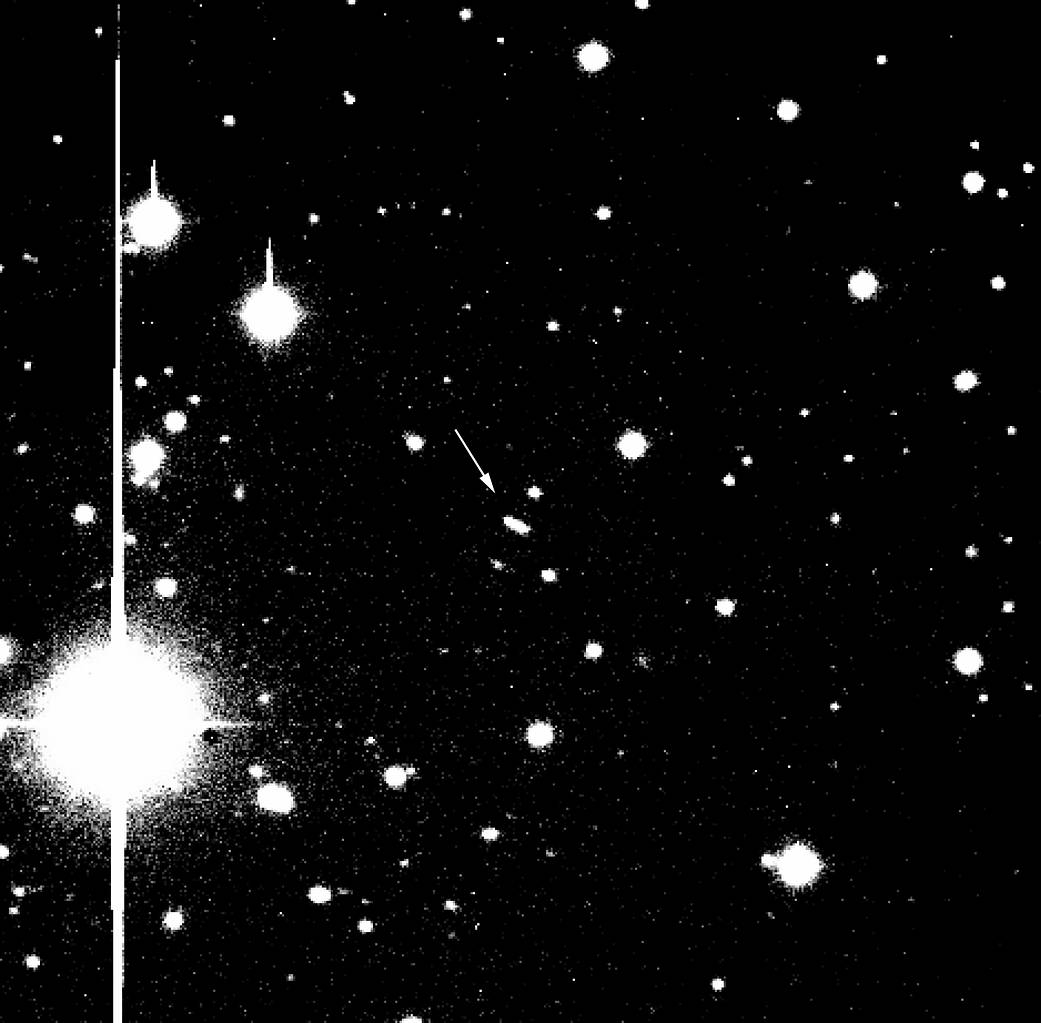June 30 is Asteroid Day.
Asteroids, sometimes called minor planets, are rocky, airless remnants left over from the early formation of our solar system about 4.6 billion years ago. The current known asteroid count is 958,967.
This image was taken using the 200-inch Hale telescope on Palomar Mountain by astronomers at the Jet Propulsion Laboratory of the Deep Space 1 spacecraft at a distance of 2.3 million miles (3.7 million kilometers) from Earth. Tracing a path against the constellation Gemini. This image was obtained on Nov. 16, 1998, 23 days after the spacecraft’s launch from Cape Canaveral, FL.
The spacecraft was receding from Earth at a speed of 1.1 miles per second relative to Earth. The spacecraft, just 4.9 feet high, was 4 million times dimmer than the faintest star visible to the unaided eye.
Top of the image is north. Each side of this square image is five arc-minutes, or approximately 0.08 of one degree.
Deep Space 1 was the first mission under NASA’s New Millennium Program testing new technologies for use on future science missions. Among its 12 new technologies were a xenon ion propulsion system, autonomous navigation, a high-efficiency solar array and a miniature camera/spectrometer.
Visit NASA’s Asteroid Watch to learn more about how the agency tracks these celestial bodies.
Image Credit: NASA/JPL-Caltech
6月30日是小行星日。
类地行星,有时被称为小行星,是46亿年前太阳系早期形成时遗留下来的岩石和无气残体。目前已知的小行星数为958,967颗。
这张照片是深空1号宇宙飞船喷气推进实验室的天文学家在距离地球230万英里(370万公里)处使用位于帕洛玛山的200英寸黑尔望远镜拍摄的。沿双子星座的方向行进。该图像是在1998年11月16日从佛罗里达卡纳维拉尔角发射飞船23天后获得的。
宇宙飞船正以每秒1.1英里的相对地球的速度离开地球。宇宙飞船只有4.9英尺高,比肉眼可见的最暗的恒星还要暗400万倍。
图像的顶部是北方。此正方形图像的每一侧为5弧分,即大约1度的0.08。
深空1号是NASA新千年计划中的第一个任务,该计划旨在测试未来科学任务中使用的新技术。它的12项新技术包括氙离子推进系统、自主导航、高效太阳能阵列和微型照相机/分光计。
访问NASA的小行星观察计划,了解更多关于该机构如何追踪这些天体的信息。
影像来源:NASA/JPL-Caltech







